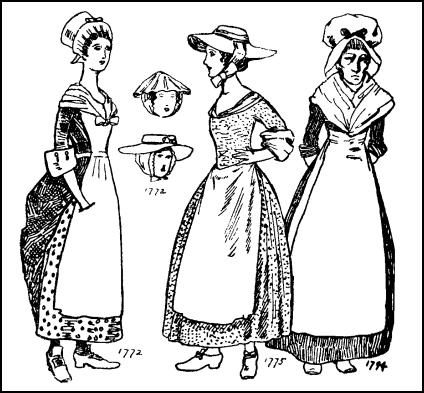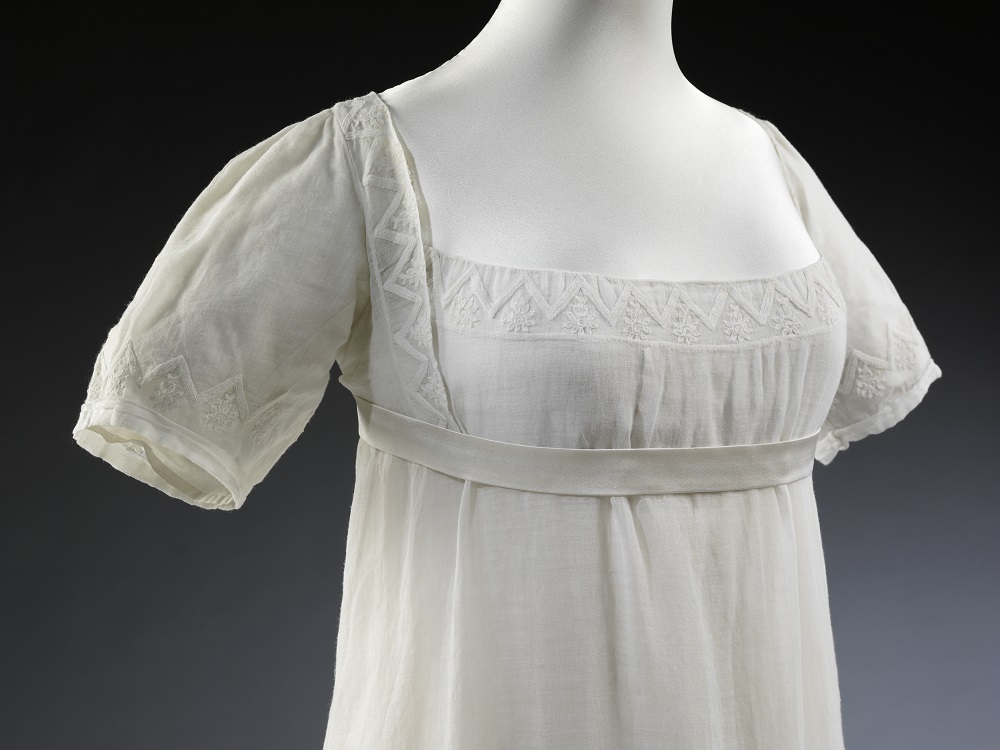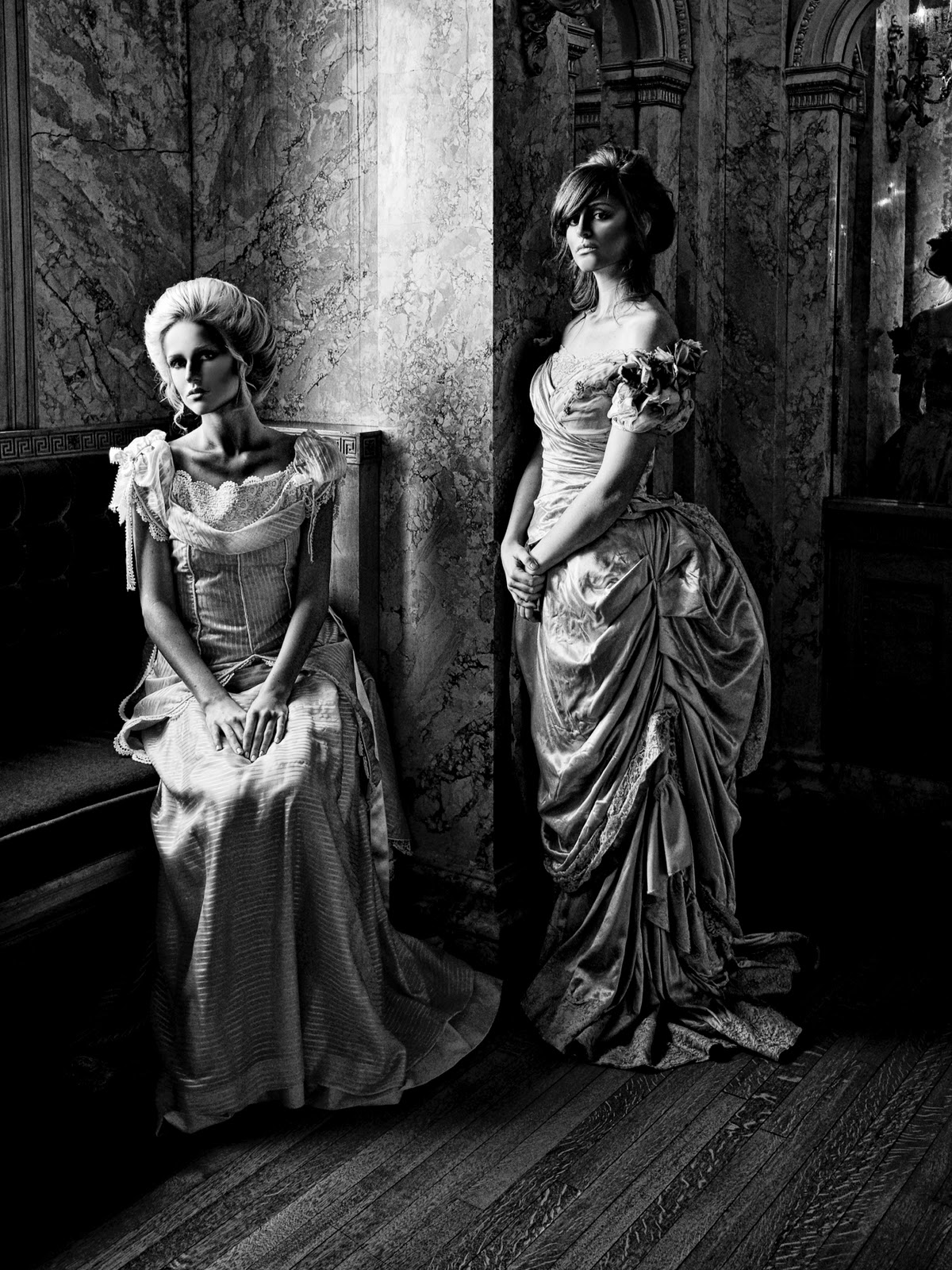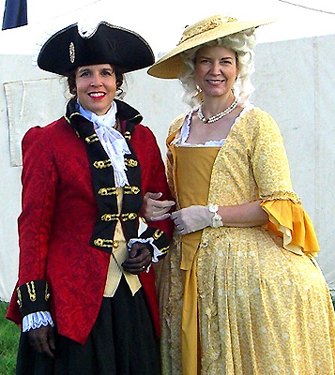### Womenís Fashion
1. **Silhouette**:
- Early in the period, women's dresses had a more conical silhouette with wide hoops.
. - By the 1790s, the silhouette became more columnar and natural, influenced by the neoclassical styles epitomized by the "Empire" or "Regency" silhouette. This style featured a high waistline (just under the bust), slim skirts, and a more relaxed fit compared to earlier styles.
2. **Fabrics**:
- Silks, satins, and velvets were popular among the upper classes, while printed cottons and muslins were commonly used in everyday wear for the middle and lower classes.
- Light, flowing fabrics such as muslin reflected the influence of classical Greek and Roman dress.
3. **Colors and Patterns**:
- Earlier in the period, rich colors and intricate patterns were fashionable.
- Later, inspired by neoclassical tastes, lighter pastel shades and simple white became popular.
4. **Decoration**:
- Embroidery, lace, and ribbons were used to decorate dresses.
- Shawls, especially those made from fine Indian cashmere, became fashionable accessories.
5. **Headwear and Hairstyles**:
- Hairstyles were initially elaborate, involving curls and height, often powdered.
- Later, simpler styles that mimicked classical forms, such as soft curls around the face, became popular.
- Bonnets and hats were essential for outdoor wear, often decorated with ribbons, flowers, and feathers.
### Menís Fashion
1. **Silhouette**:
- Started with the elaborately embroidered silk coats, and moved towards simpler tailcoats around the 1790s.
- Breeches were worn early in the period, giving way to tighter trousers and pantaloons by its end.
2. **Fabrics**:
- Silk, velvet, and fine wools were commonly used materials.
- For less formal occasions, linens and later cottons were popular.
3. **Colors and Patterns**:
- Rich, dark colors and bold stripes or checks were popular in men's fashion.
- Neutral and pastel tones were also fashionable in day wear.
4. **Decoration**:
- While earlier garments featured embroidery and metallic threads, later styles favored a more understated elegance with fewer embellishments.
5. **Headwear and Hairstyles**:
- Wigs, although declining in popularity, were still worn early in the period, often powdered.
- By the end of the period, natural hair worn short and styled with sideburns was the fashion.
- Top hats became increasingly popular.
### Accessories
- **Women**: Fans, reticules (small handbags), gloves, and parasols.
- **Men**: Canes, cravats, and later, neckties, top hats, and pocket watches.
The Late Georgian period was a time of great change in fashion, reflecting shifts in social attitudes, technological advancements, and cultural influences. The transition from the ornate and structured styles of the early 18th century towards the more laid-back and natural styles of the Regency period is particularly notable.

854 × 1200
Source:150KB

561 × 403
Source:115KB

1162 × 1280
Source:1.8MB

393 × 424
Source:42KB

750 × 1000
Source:143KB

1600 × 1200
Source:486KB
1600 × 1200
Source:346KB

400 × 209
Source:104KB

375 × 335
Source:148KB
1798 × 1440
Source:298KB


